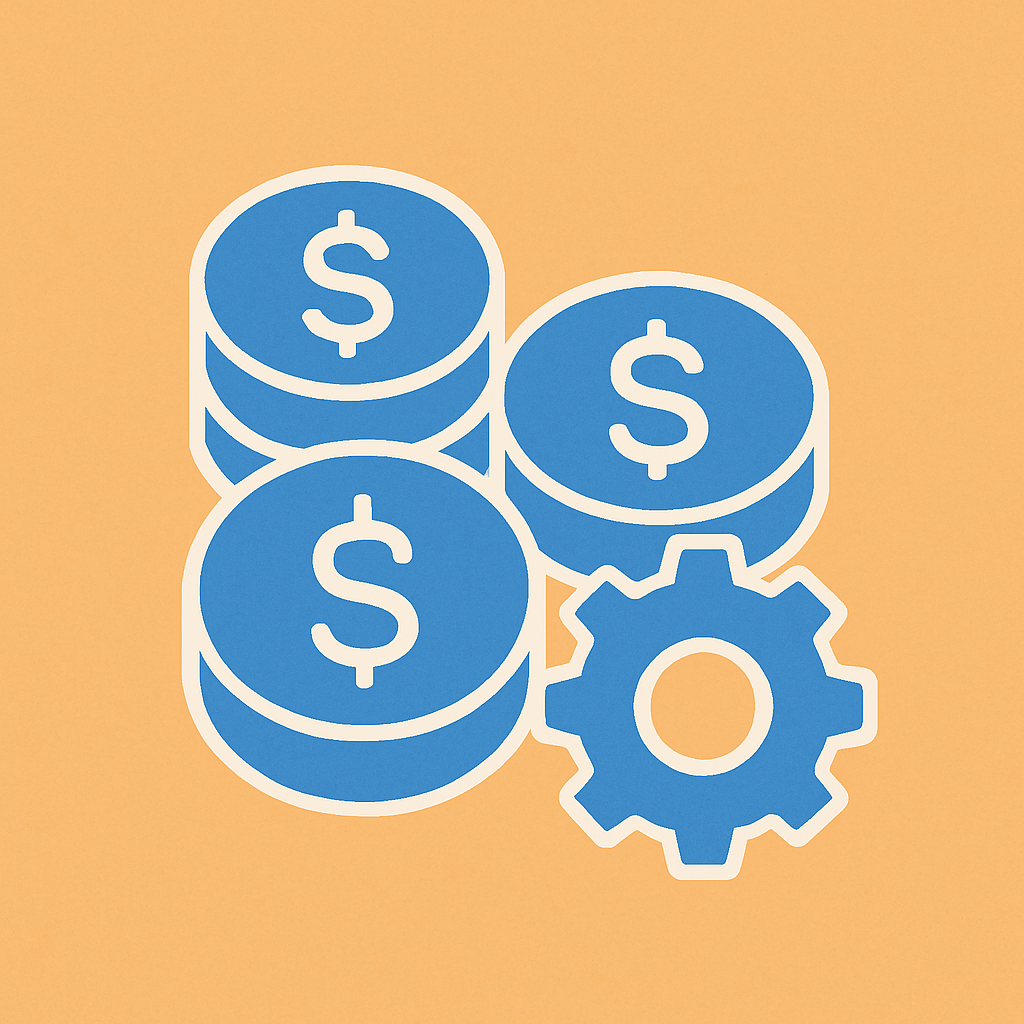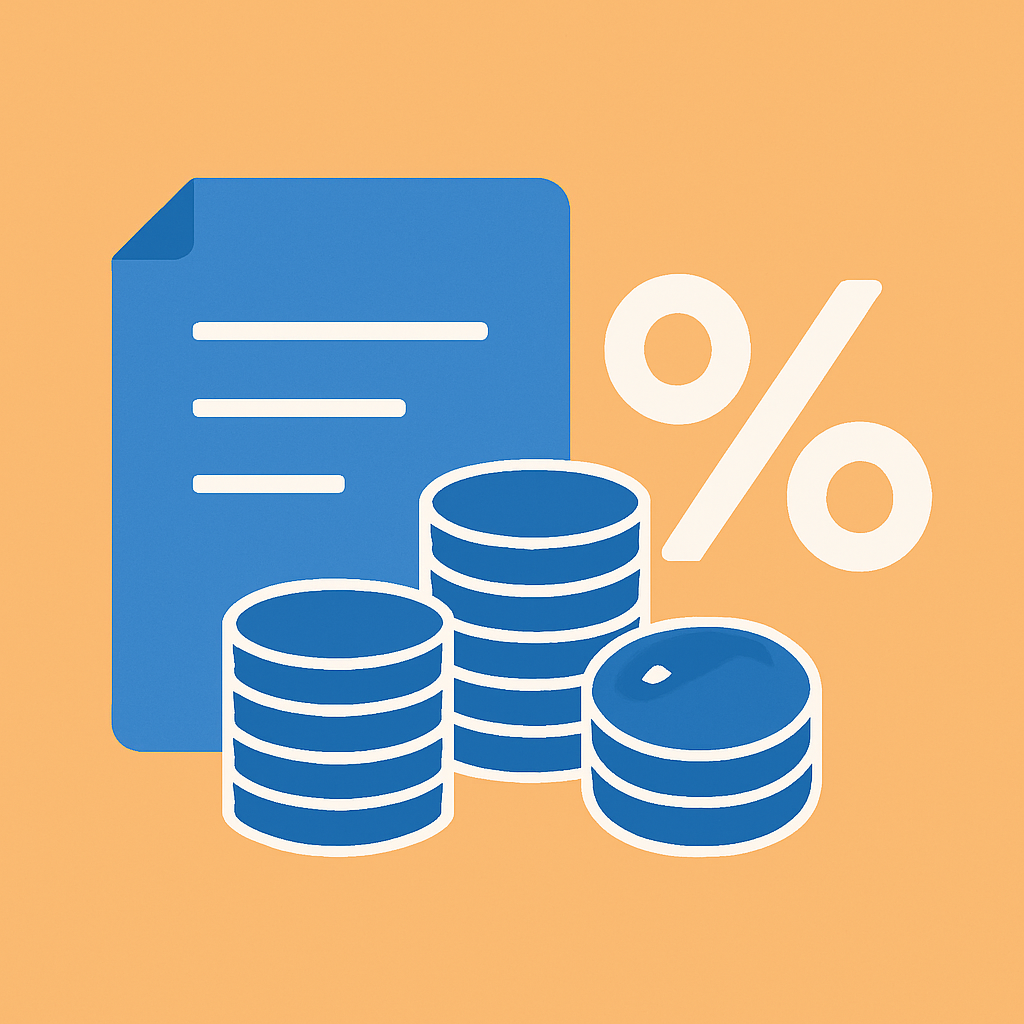What projects could be evaluated?
QIPVEX (Quick Investment Project Valuation - EXpress) is designed for projects which have three phases:
- Investment is a period during which capital costs are incurred (orange)
- Operating period is the time during which goods are produced, sold, and revenue is collected (blue)
- Liquidation is the period after production has finished when all facilities and assets must be liquidated or sold (grey)
The process of valuation

The information needed for the evaluation:
- Data for calculating project capex, opex, revenue, financing parameters and some general information
- Tax rates applicable in the country of project realization and data for valuation of possible tax incentives
- Coefficients for Sensitivity analysis and Monte-Carlo simulation
After all the needed data is set, the key values — including efficiency indicators — will be calculated. The main drivers that may affect efficiency will be identified by sensitivity analysis, and probable efficiency results will be evaluated using Monte Carlo simulation
Data for calculations
General information
- Name - simply the name of your project
- Currency used for cash flows and key results of your project
- Country where the project is being realized. The chosen country affects the taxes applied to the project
- Project start date
- Project duration (from investment to liquidation) may be set according to the main equipment lifetime or as preferred. Each period represents one month


Capital Costs
- Total capex required for project realization. VAT is not included and will be added using the applicable tax rate from the Tax section of the data
- Taxable capex is the portion of capital costs to which the asset tax rate applies
- Capex distribution: The period between the project start and production start is divided into up to three parts. Capital costs are allocated to these parts according to the selected distribution
- Capex annual growth rate is the rate at which capital costs are expected to increase annually, typically based on forecasted inflation
- The Depreciation period is the average useful life of the capital assets (capex) provided. If this period is shorter than the project duration, additional maintenance costs equal to the inflated capex are incurred. Otherwise, revenue for the final period is increased by an additional gain equal to the remaining asset value at the end of the project
Production Data
- Production start date should be later than the project start date
- Annual maximum production volume according to equipment capacity
- Production level represents the expected share of annual maximum production, determined in accordance with actual production constraints and operational factors
- Full Production Date is the point at which the planned production level is achieved. The Full Production Date must be later than the Production Start Date
- Mid-level production: The period between production start and full production date is divided into up to three stages, allowing mid-level production volumes to be set


Revenue Calculation
- Price per unit of production (VAT not included)
- Price annual growth rate is the rate at which production price is expected to increase annually, typically based on forecasted inflation
Operating costs
- Variable costs are expenses that depend on the volume of production (raw materials, transportation, energy, packaging, shipping, etc.). These costs are calculated per unit of production (VAT not included)
- Variable costs annual growth rate is the rate at which variable costs are expected to increase annually, typically based on forecasted inflation
- Fixed annual costs are expenses that do not vary with the volume of production (e.g., rent, utilities, repairs). VAT is not included
- Fixed costs annual growth rate is the rate at which fixed costs are expected to increase annually, typically based on forecasted inflation
- Number of workers regularly involved in production. Administrative personnel should also be included
- Average monthly salary is calculated based on the salaries of workers involved in production. Social contributions are not included and are calculated according to the data in the Tax section
- Salary annual growth rate is the rate at which salaries are expected to increase annually, typically based on forecasted inflation


Financing Data
- Equity is the part of total project financing covered by the capital of the project owner
- Annual cost of debt is the effective interest rate used for financing calculations when the project is funded by both debt and equity (i.e., when equity is less than 100 percent)
- The annual discount rate is the average annual rate of return that the project owner could earn by investing capital in alternative assets, such as securities or bank deposits. For example, suppose the project owner wants to invest 1,000 in a renewable energy project and exit after 10 years. Alternatively, the owner could invest 1,000 in securities of companies connected with renewable energy, whose average annual historical rate of return has been 10 percent over the past 10 years. In this case, the discount rate used to value the project should be at least 10 percent
- Annual inflation rate is the average annual rate at which all costs and prices are expected to increase in the country selected for project realization. Usually, the Gross Domestic Product (GDP) deflator is used
Taxes
- Depending on the project realization country, the main tax regimes can be selected and basic rates are listed by default (e.g., corporate tax, asset tax, social tax rate, VAT, etc.)
- Tax incentives according to the tax code of the chosen country can be selected. The period of application for reduced tax rates must be greater than zero to activate a specific reduced tax rate

Sensitivity analysis

In order to define the main drivers that may affect efficiency sensitivity analysis is provided:
- Sensitivity coefficients are specified for the main project parameters: duration, rates (discount, inflation, interest), capex, production volume, price, variable and fixed costs, salary, and equity
- These coefficients sequentially take 11 values within the specified range. For example, if the sensitivity coefficient for capex is set to 20 percent, it will take values of -20, -16, -12, -8, -4, 0, 4, 8, 12, 16 and 20 percent
- Corresponding project parameters are sequentially varied according to their sensitivity coefficients. For example, if capex is initially set to 1,000, it will be varied across the following values: 800, 840, 880, 920, 960, 1,000, 1,040, 1,080, 1,120, 1,160, and 1,200
- The net present value is calculated for each specified value of the sensitivity parameter
Monte Carlo Simulation
To estimate probable values of the project results, a Monte Carlo simulation is performed:
- The main project parameters - duration, rates (discount, inflation, interest), capex, production volume, price, variable and fixed costs, salary, and equity - are simulated using a triangular distribution
- Boundary values for simulation parameters are set as percentages of the basic values specified in the data section. The mean value is set equal to the basic value of each parameter
- For each project parameter, minimum and maximum percentages are set. For example, if the basic capex value for the project is 1,000, and the minimum capex is set to 20 percent and the maximum to 30 percent, then the boundaries for calculations are: minimum capex = 800, maximum capex = 1,300, and mean = 1,000
- During the simulation, 10,000 iterations are performed, with parameters randomly set within the specified ranges and around the mean values described above

Results

The following efficiency metrics are used to assess the commercial efficiency of the project:
- NPV (Net Present Value) is the present value of free cash flows, discounted to the project start date using the specified discount rate. A positive NPV indicates that the evaluated project is more efficient, or provides a higher return, than alternative assets or investments with a rate of return equal to the discount rate
- IRR (Internal Rate of Return) is the discount rate at which the net present value (NPV) of the free cash flows for the project equals zero, if such a rate exists. The calculated IRR is converted to a real rate of return by adjusting for inflation specified in the project
- Rate is the real discount rate, calculated by adjusting for inflation the discount rate used in the project. As both IRR and Rate are real values, they can be directly compared. The greater the gap between IRR and Rate, the more resilient the project is to unexpected changes in its key drivers
- Discounted Payback Period (DPP) is the time from the project start when all initial costs are recovered by generated income, taking into account the time value of money. DPP is calculated as the point when the cumulative sum of discounted free cash flows changes its sign from negative to positive for the last time
- Payback Period (PP) is the time from the project start when all initial costs are recovered by generated income. PP is calculated as the point when the cumulative sum of free cash flows changes its sign from negative to positive for the last time
The following key metrics for the project are calculated and their totals for the whole calculation period are listed:
- Volume is the total amount produced during the project implementation period. Both peak and intermediate production levels are taken into account
- Revenue is the total cash generated from the sale of the total production volume, plus income from asset sales if there is any residual asset value at the end of the project. Price inflation is taken into account in the calculation
- Other Income includes VAT compensation, if applicable
- Opex includes variable, fixed, and labour costs (excluding social contributions)
- Percents is the interest expences
- Capex (incl. VAT) is the total amount of capital expenses for the project. VAT is included in the calculation, and inflation is taken into account
- Maintenance (incl. VAT) costs are incurred after capital assets (Capex) have been amortized to zero, provided the project duration exceeds the set amortization period. These costs are calculated automatically based on Capex and the annual Capex growth rate. VAT is included if applicable according to the tax law
- Taxes include corporate, asset, social, and other taxes, according to the tax code and selected incentives
- Free Cash Flow (FCF) is the net cash generated by the project, calculated as revenue plus other income and debt received, minus operating expenses (Opex), interest expense, Capex, maintenance, taxes, and debt repaid. FCF is used to calculate all key commercial efficiency metrics for the project


Financing Sources:
- Equity is the total amount of own capital invested in the project during its implementation
- Project Funds is the amount of cash generated by the project and reinvested into the project when revenue is insufficient to cover all costs
- Debt is the total amount of borrowed funds received for the project
Capex is financed from equity and borrowed funds (debt) according to the selected equity share. After production starts, Project Funds are replenished from positive Free Cash Flows (FCF) and used to offset negative FCFs. If Project Funds are depleted, equity and borrowed funds are allocated according to the equity share. If any debt remains unpaid at project completion, it is repaid from equity
The following graphs are presented to illustrate the results of the valuation:
- Revenue and Costs illustrates the distribution of revenue, other income, and costs (capex, opex, interest, and taxes) over the project duration
- FCF and Revenue illustrates the dynamics of revenue and free cash flow generated during the project implementation
- Capex and Financial Sources illustrate the allocation of capital expenditures and their corresponding financing sources during the investment period of the project
- Debt Financing illustrates the dynamics of debt received, repaid, and interest payments over time
- Sensitivity analysis for NPV illustrates how changes in key drivers affect the net present value. The steeper the slope of a line for a given parameter, the greater its influence on NPV
- Monte Carlo - NPV analysis illustrates the distribution of positive and negative NPV values calculated during Monte Carlo simulation. The larger the area corresponding to positive NPV values, the higher the probability of achieving positive results
In addition to the Monte Carlo - NPV analysis graph, a table of Monte Carlo results is provided. This table presents NPV, additional efficiency metrics, and sources of financing for different percentiles. For example, if NPV = 1000 at the 30th percentile, it means there is a 70 percents probability that NPV will be greater than 1000. The indicators associated with each percentile are not directly comparable to each other, as their values are determined independently for each metric based on the full set of simulation iterations
